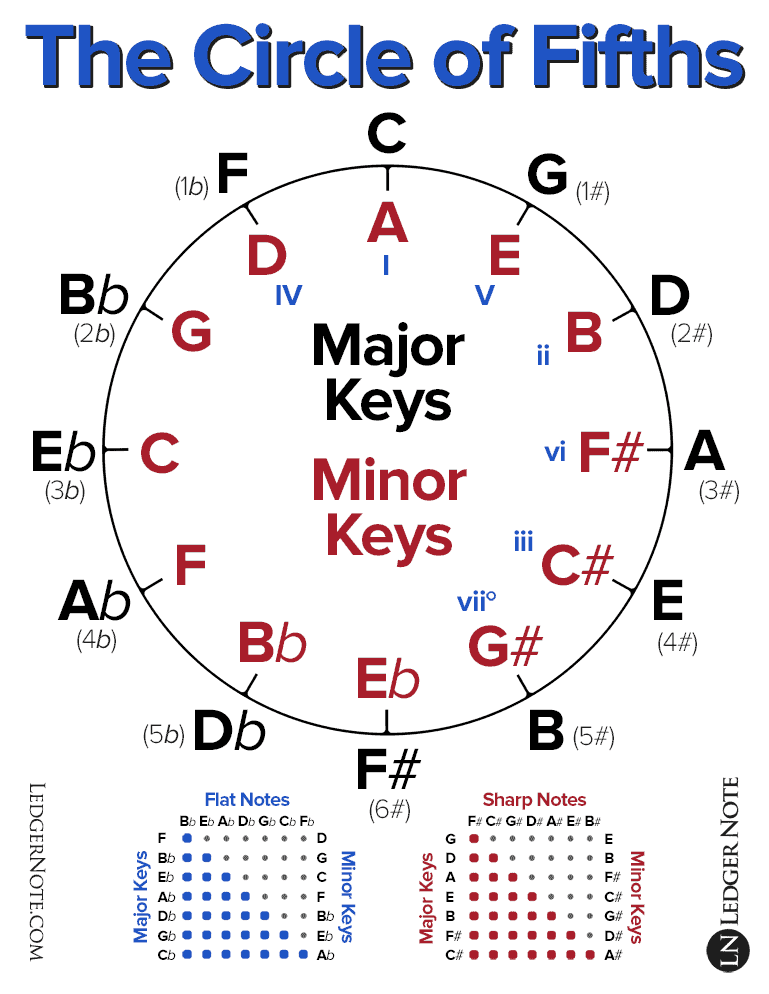Thanks for the information and books. That will help me a lot.
I was thinking, there must be some way to work out all possible chords from any scale without a computer.
Maybe drawing a circle with points like a clock, with all twelve notes, highlighting the notes of the chosen scale and then:
1: draw as many triangles between the highlighted notes as is possible
2: draw as many squares ( or four sided shapes anyway) between the highlighted notes as is possible
3: draw as many pentagons (five sided shapes) between the highlighted notes as possible.
( This technique doesn’t work out that well though because I suppose chords can span more than one octave and have up to 10 notes…After getting all those notes, there is the total headache of naming the chords correctly and adjusting the note descriptions to be correct, #s or bs )
Do you know of any better technique?
@random
Every Major scale has a relative minor scale which contains the exact same notes as the Major scale. The minor scales are the same as major scales started from the 6th scale degree. (Cycle of fifths diagram helps).
12 O’clock ( no #s )
C Major : C D E F G A B
A minor : A B C D E F G ( A minor is relative minor of C Major, C Major is relative Major of A minor )
1 O’clock ( 1#, F# )
G Major : G A B C D E F#
E minor : E F# G A B C D ( E minor is relative minor of G Major, G Major is relative Major of E minor )
2 O’clock ( 2#s, F# and C# )
D Major: D E F# G A B C#
B minor: B C# D E F# G A ( B minor is relative minor of D Major, D Major is relative Major of B minor )
3 O’clock ( 3#s, C# F# and G# )
A Major: A B C# D E F# G#
F# minor: F# G# A B C# D E ( F# minor is relative minor of A Major, A Major is relative Major of F# minor )
The whole list ( just scales ) is here : https://forum.renoise.com/t/cycle-of-fifths-scales-with-left-right-fingering/47981
The whole list ( scales and their chords ) is here : https://forum.renoise.com/t/cycle-of-fifths-chords-with-intervals-in-semitones-and-hex/47992
